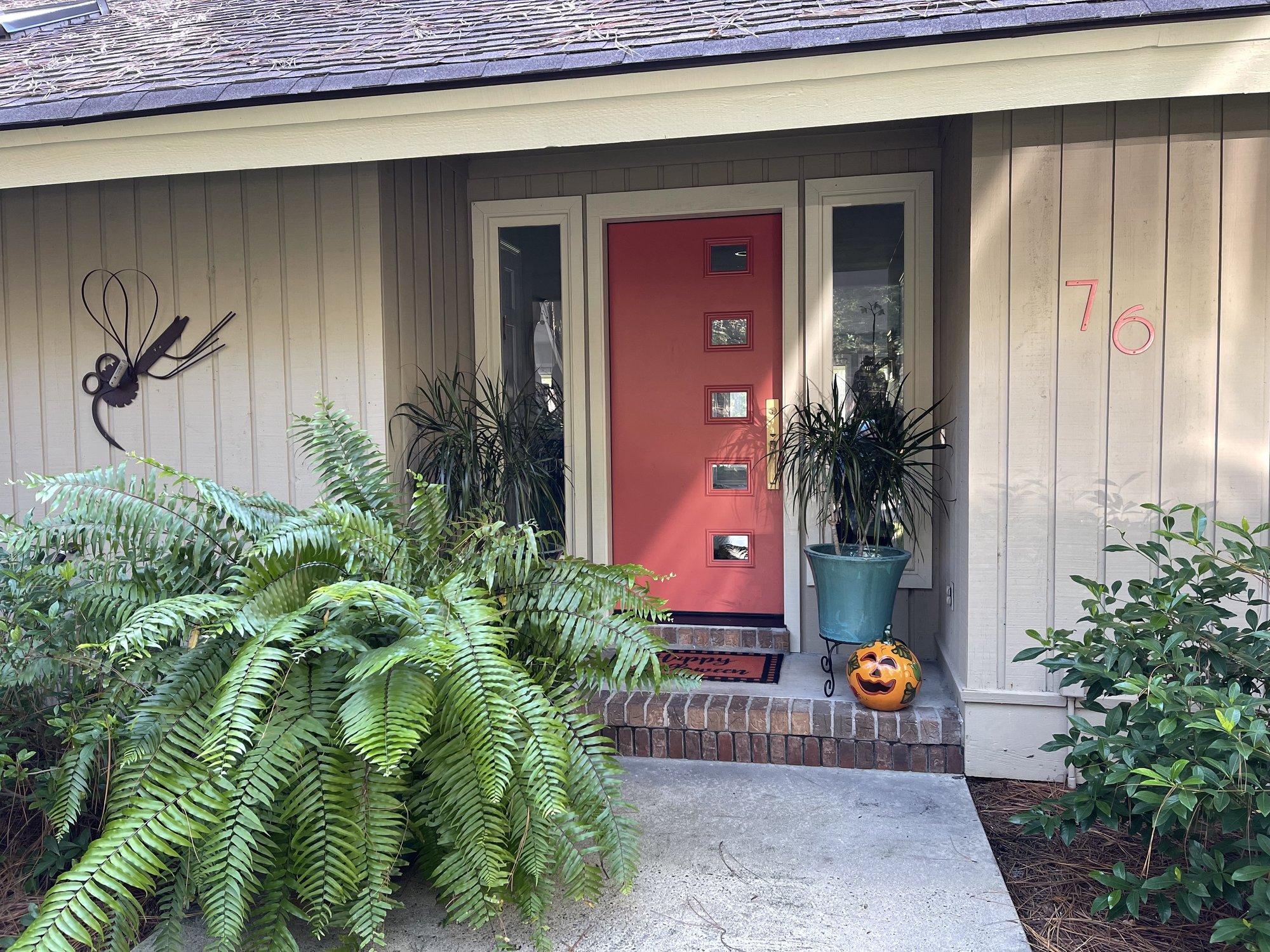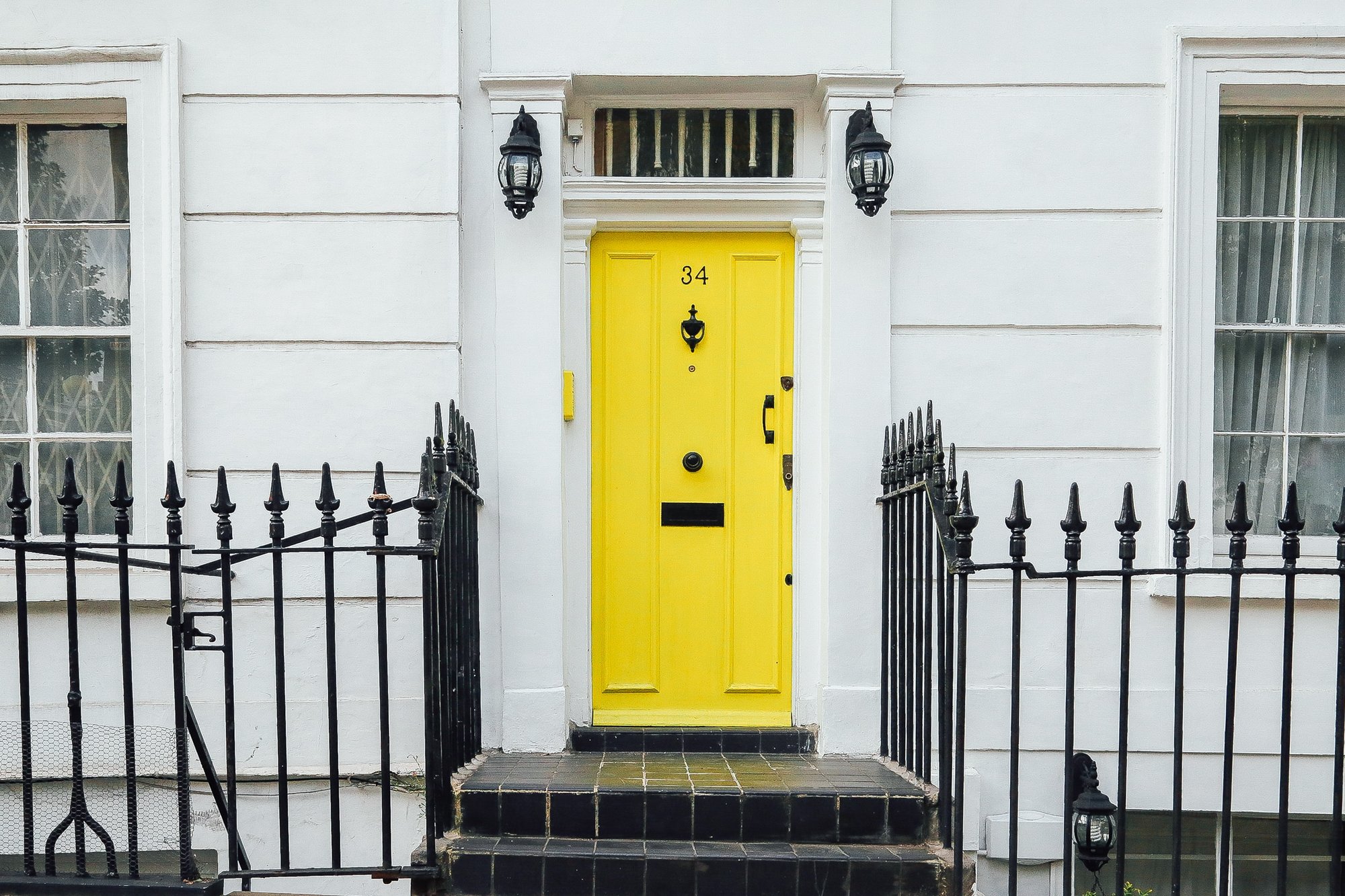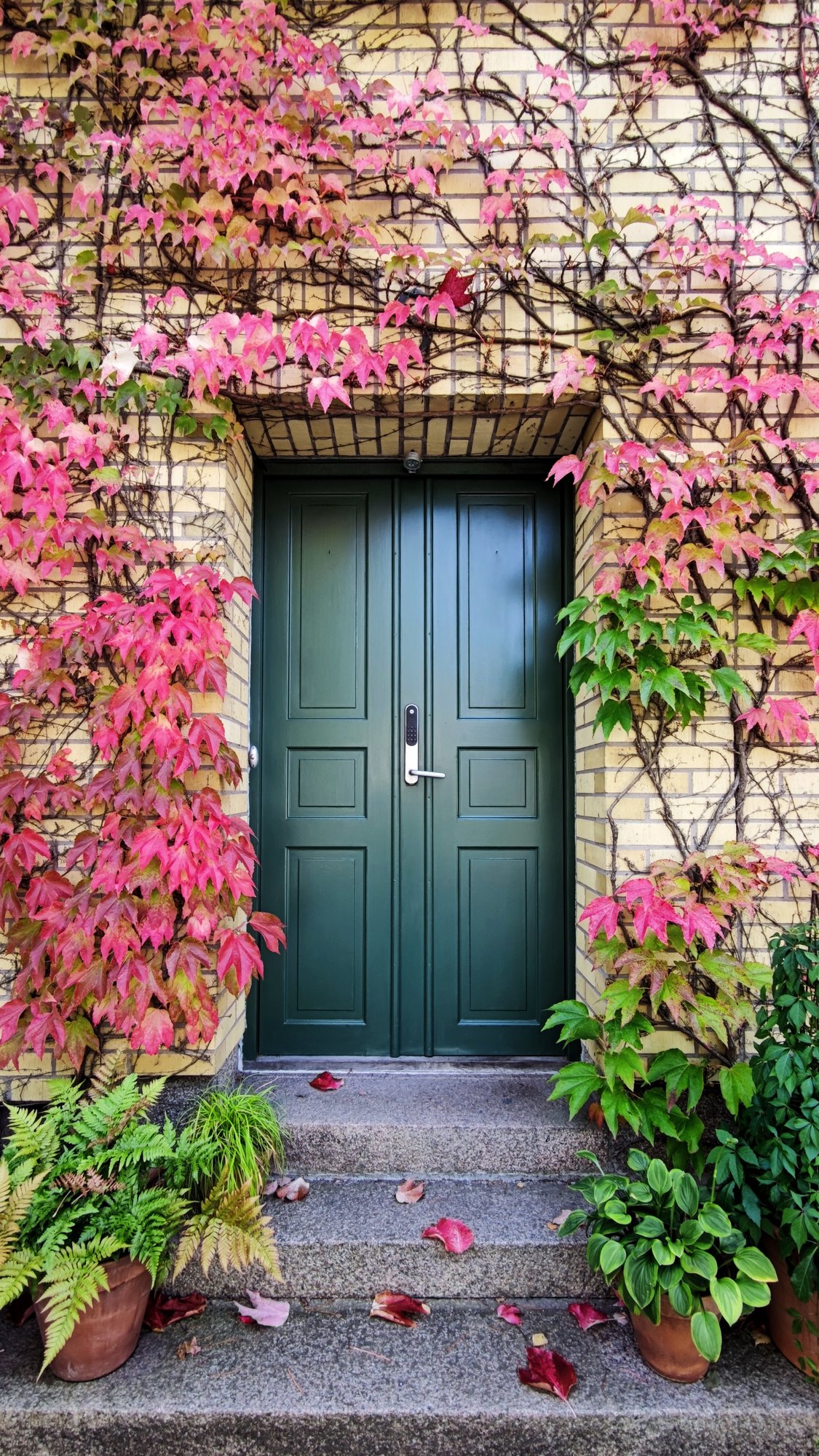Front doors matter. They give a home a distinct personality and can update a house feeling a little dated. It changes the whole appearance and "feel" of a home. It either welcomes you or makes you shutter! Our old front door on our house was awful. It was varnished brown with gold trim and glass. It made the whole house look tired and did not match the style of the home. Once we changed it, POW! It made all the difference. I love, love, love the way it turned out. Perfect color for my favorite season too, Welcome Fall!

Knock, Knock: Your Front Door Holds the Key to Boosting Curb Appeal
First impressions matter, even in today’s red-hot real-estate market—and designing a grand entrance could make a big difference
When sisters Char Riley and Candace Carroll renovated a Los Angeles home last winter with the intention of flipping it, they knew the exterior needed some serious TLC. To complete the home’s Spanish-inspired look, they lined the porch with clay saltillo tiles and added teal and orange tiles to the stairs, which complemented the terracotta roof and seafoam green trim. They removed a tree blocking the house, planted new grass and installed an Old World-meets-modern front door made of dark wood.
Their parents, who partnered with them on the flip, were hesitant to spend so much effort on the exterior. But the sisters, both experienced investors and Sotheby’s real-estate agents, have flipped nearly 120 homes and knew it would pay off. They were right: The home, which they bought for $995,000, sold for $100,000 over asking price, closing in May for $1.6 million.
real-estate agents, have flipped nearly 120 homes and knew it would pay off. They were right: The home, which they bought for $995,000, sold for $100,000 over asking price, closing in May for $1.6 million.
The curb appeal lured the buyer. “His parents happened to drive down the street one day and sent him a photo of the house,” says Mrs. Riley.
In today’s market, with low inventory and quick sales, sellers might think they can turn a big profit without having to do much. But agents say that’s not the case.
“The houses that are flying off the market are the ones that are done nicely,” says Mrs. Riley. “When you have a house where you forgot about the front yard, that sets the tone. People aren’t going to want to pay top dollar.”
According to Zillow, 51% of homes sold for above asking price in July 2021. “Half of homes are selling at or below asking,” says Amanda Pendleton, Zillow’s home trends expert. “That says you still need to do all the fixes to appeal to the most number of buyers.”
Compass broker Robin Kencel recommends sellers consider the experience from when a buyer parks their car until they reach the front door. “I’m a believer, as Barbara Corcoran says, that in the first eight seconds, you know if you’re going to buy a house.”
That was the case for one of Ms. Kencel’s clients, who is listing her Greenwich, Conn., home for $8.995 million. When she bought it 46 years ago, she didn’t have to step inside—the front door screamed “welcome.” While preparing to list, she painted it a French blue, in the spirit of the original color.
to step inside—the front door screamed “welcome.” While preparing to list, she painted it a French blue, in the spirit of the original color.
“The front door reflects an owner’s personality,” says Cara Fox, owner and lead designer of The Fox Group, a design-build firm based in Salt Lake City. A solid wood door exudes formality and privacy, while a Dutch door, with its windowed top that opens separately—a style Mrs. Fox and Ms. Kencel are seeing more of—is more casual and inviting.
Fresh paint is an easy and inexpensive way to upgrade a front door, but choose wisely. Bright primary colors are made for Instagram, but a 2018 Zillow report found that homes with charcoal or black front doors sold for $6,271 more than expected.
Mrs. Fox, who likes deep grays like Farrow & Ball Plummet and Benjamin Moore Raccoon Fur for front doors, recommends a high gloss finish for darker neutrals. “It brings elegance,” she says.
Hardware and house numbers allow for expression. Mrs. Fox’s clients mix styles, like vintage backplates and Victorian knobs on modern doors, and color-coordinated address plaques.
Architect Robert Hutchison says it’s also important to focus on an entrance’s progression. “We like to prolong the entry experience, rather than make it an abrupt transition,” he says. “The aim is to create something layered with a sequence of spaces.”
Mr. Hutchison used seating and planters along the front stairs of a Seattle home he worked on. For one Greenwater, Wash., house, he built a hidden inner courtyard beyond the entry wall. “It’s about connecting back to the city, the site and the landscape,” he says.
Blythe Yost, CEO of online landscape design company Tilly, says that foundation planting helps connect a home with its surroundings. “It’s what’s directly across the front of your house,” she says. “It knits it to the landscape. A house without foundation planting looks a little naked.”
A few perennial shrubs can help frame the door, but Ms. Yost recommends creating a layered look that’s higher in the back, with mid-size plants in the center, and a ground cover that spreads out in front. “It gives the landscape a richness that a single or double row can’t do.”
She warns against making a front garden “look perfect at every moment.” Instead, plant something—like bulbs that bloom in early spring or a flowering tree that dazzles every May—to create a landscape that’s “really awesome at one point in the season — something your neighbors will remember.”
Photo #1 by Allison Cobb, Photo #2 by Evelyn Paris on Unsplash, Photo #3 by Nazrin B-va on Unsplash

Leave A Comment